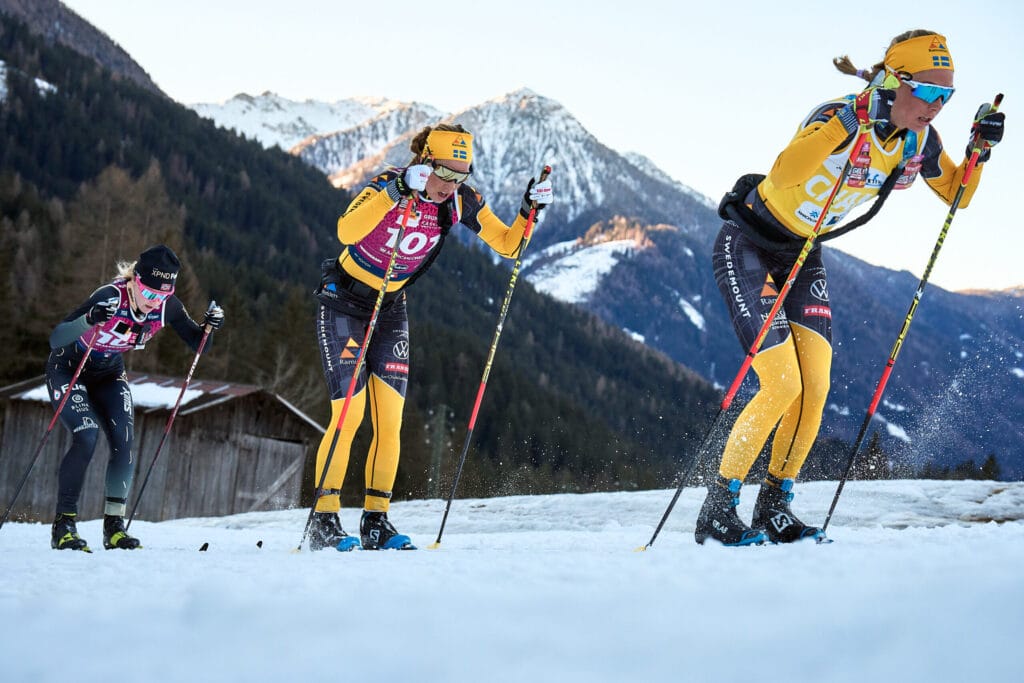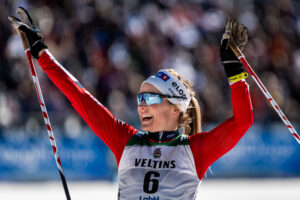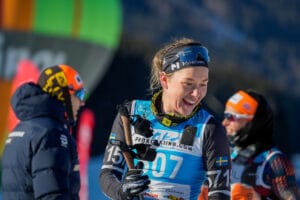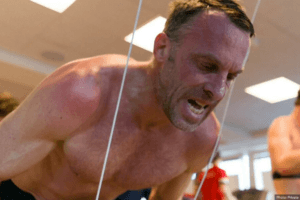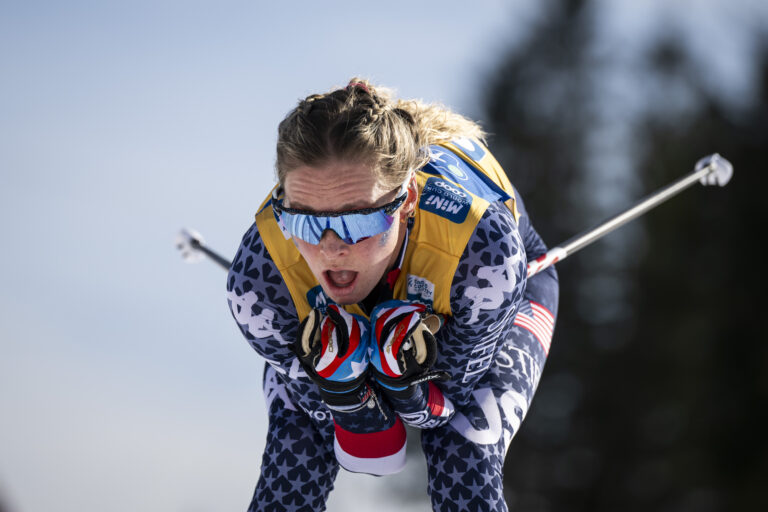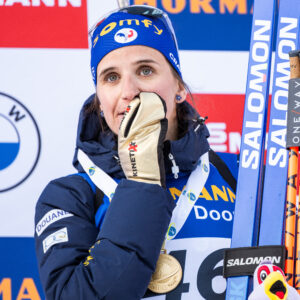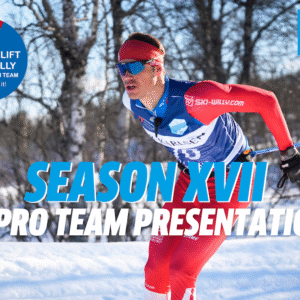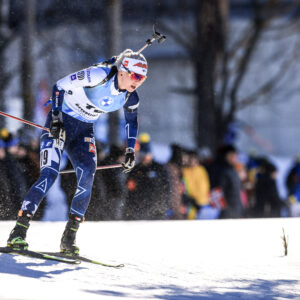Team Ramudden And Race Tactics
In this article, Gustaf Korsgren talks about the tactical thinking in Ski Classics, how many scenarios they work with before a race, and the team skiers’ different roles.
In traditional cross-country skiing, team skiing, with a few exceptions, is happy with its absence. But there have been times when it was “skiing” for teammates. At the 2010 Olympics in Vancouver, Johan Olsson got a break early in the race, and the Swedish skiers were up in the front ‘disrupting’ the other teams’ chase for the Swede. Olsson was brought back but still won a medal, and the gold was won after an impressive finish by Marcus Hellner.
A couple of years later, as is well known, Olsson’s breakaway lasted all the way on the epic 50km in Val di Fiemme, 2013.
“It is strange that the cooperation has not been used more diligently even on traditional cross-country skiing. Otherwise, it is the case that Petter Northug for many years when he could bet that the breakaway would be chased and so he decided in the sprint,” says Gustaf Korsgren, who until last winter was Pro Team Director in Team Ramudden.
For the coming winter, Lina Korsgren has taken over that role, and the exact title of Gustaf has not been decided yet.
How much have you worked as a team in the competitions?
“I would say that we have won many competitions on the women’s side by just working as a team. One difference on the women’s side is that they have been fewer, so it has been possible to maneuver in the field. But it’s based on you skiing as a team. And it is a small change because if you compare it with cycling, it is a team sport where you are “born into team thinking.” In skiing, we are not there, even though Ski Classics has meant that we have taken a step towards working more with roles. But it is not yet as pronounced. But you still have a chance to decide races if you work as a team,” says Korsgren.
But how many scenarios do you work with before a race?
“So it is difficult to control a race exactly as you want. It is always a sequence of events that causes the races to develop in a certain way. If you have a hard profile that exactly this is how you want it, you have to be very strong and confident in your thing to be able to implement it. I would rather say that tactics are just as much about instinctively making the right decision in the group, small things where you make the right or wrong decision. These are things that do not directly determine but are indirectly decisive.”
Can you be more specific?
“I do not know if I want to be more concrete than that. But I would say that the tactics are more sophisticated than to say that we wait to go to that hill or go to the front and set the pace.”
How much of the tactic is predetermined?
“If we take Vasaloppet last winter, we had a clear plan to cover any attacks and that we would have an offensive tactic because we know that if we are offensive, we will put ourselves in good positions. That was especially the case on the women’s side. Because from previous races, we have been able to establish that if we have been offensive, for example, Lina (Korsgren) could control the group if Ida (Dahl) had left. It’s not the one who runs away who decides a race. Sure, they must be strong enough, but you need the help of the person in the group behind you who, with his job, makes sure to ‘kill’ the chase. And you can do that by just being present, but if the person, on the other hand, participates in the chase, then it is not team cooperation, and that is not obvious in all teams.”
“It may be that if you are better in general, but it can still be better both for the team and for me to destroy the others’ chase faster than for me to chase a better position in this particular race. Because if you succeed with that, it means that either my teammate wins or the others in my group catch up, and then I have more energy left because the others have had to chase,” says Korsgren.
A couple of weeks ago, Max Novak was introduced as a new skier in Team Aker Dæhlie. Last season, Novak skied for Team Ramudden. And he then took the first victory of his career in Ski Classics at the Pustertaler Ski Marathon. There was a transparent team tactic that would prove to be very successful.
“Just in that race, Johannes (Eklöf) had a stated role that he would be very offensive and try to create a break in the first part of the race. This was to put the others in our team in a calmer situation, plus we knew it was something that benefited him. Herman (Paus), on the other hand, had a terrible day. He would keep an eye on Max to make sure he would get help with a pole or similar if any such situation arose. This is so that Max would just make sure to focus on the finish. But if Johannes’ gap had become big, Max’s role would also have changed. And this is how the layout generally looks; that we have a plan that must be flexible depending on the race’s development,” says Korsgren.
How do the skiers view “getting a role”?
“It varies, but generally, they feel it is quite liberating. But the dangerous thing about this is you can risk removing that dynamic that a race entails because you can be locked in the role of “helping” someone else. If the person you are going to help is having a bad day, what will be my role then? As I said earlier, in recent years, we on the women’s side have been able to draw up the plans, and it has been relatively easy to ski as a team as there have been quite a few people at the front. On the men’s side, we have not had that position, but from the middle of the last season, we had race after race several people in our team who were there. But then you must be humble and realize that it is not just a matter of snapping your fingers; then, the collaboration works immediately. It’s about teamwork.”
“And in skiing, it is not enough to have a tactic. You have to hit just right with the skis. If we take Ragde Charge, who succeeded so well at Vasaloppet, they had a stated goal already before the season that Vasaloppet and Marcialonga were the races they prioritized. However, we prioritized ensuring we were in good shape at the beginning of the season. We did not think that everyone would think so, which was why we went to high altitude the day after Christmas Eve to make sure we were prepared for the competitions that came right after the Christmas break. It gave us three victories out of four possible that weekend (Max Novak in the Pustertaler Ski Marathon and Ida Dahl and Johannes Eklöf in the Prato Piazza Mountain Challenge). It is also a team collaboration; that we had chosen to plan the season that way,” concludes Korsgren.
